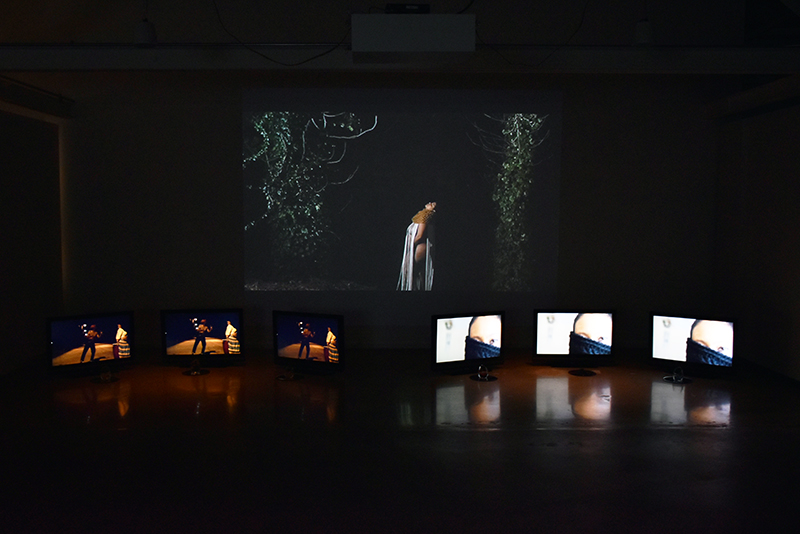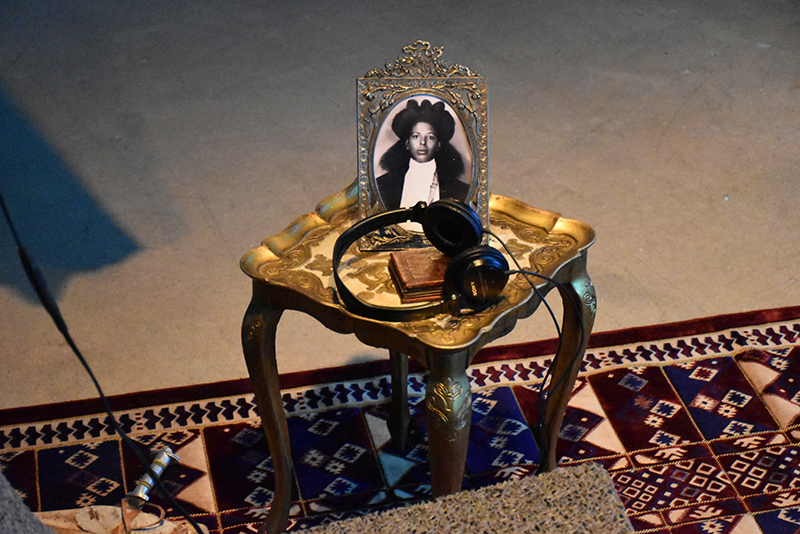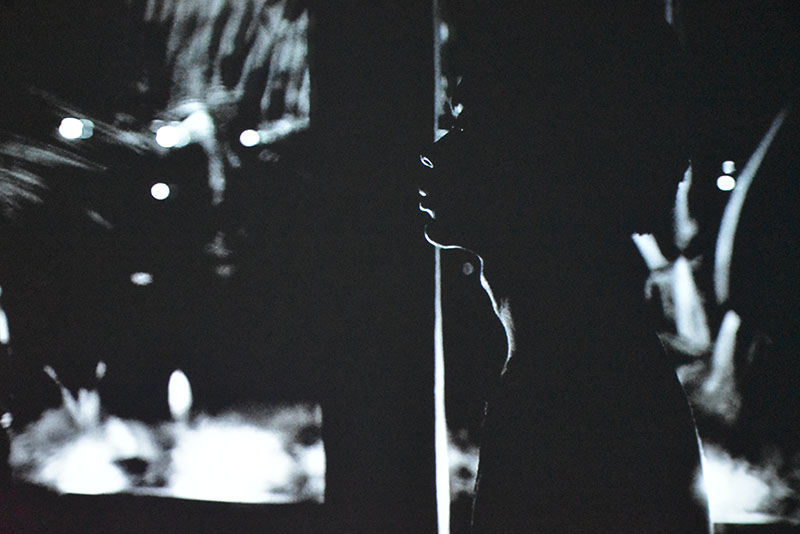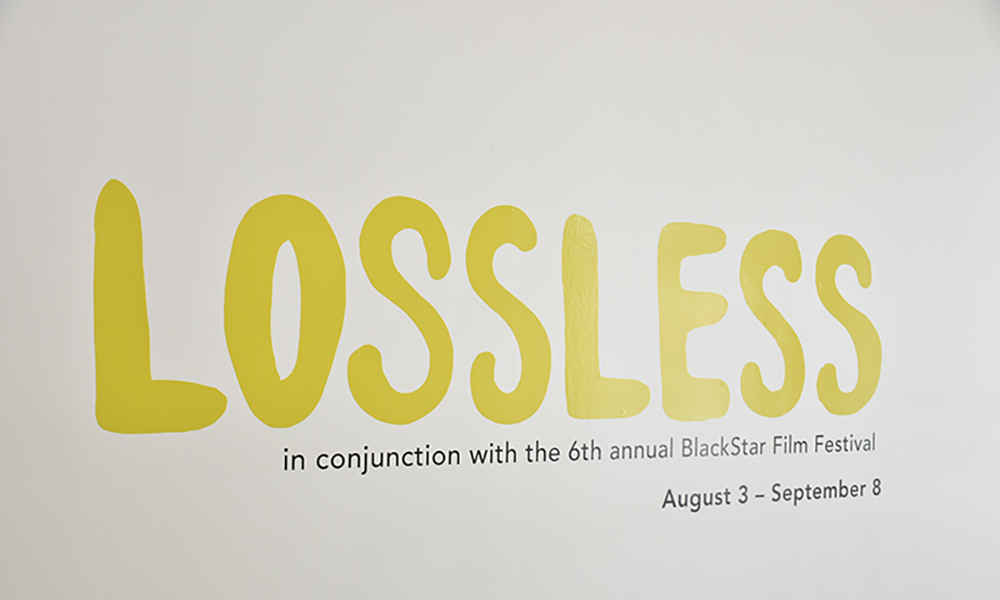Walking through the Lossless exhibit on a Tuesday afternoon, I was struck by the plurality of techniques used to communicate trauma, revision, and resistance. Currently at the Leonard Pearlstein Gallery in Philadelphia, the show is described in the program as an “exploration of Black and Brown bodies as a site of compression, considering the ways that labor, illusion, loss, lineage, and personhood are imagined and re-constructed.” Consisting of seven film installations, each elaborates on a sense of lost history or attempts to revise tropes regarding what it means to be othered. By the end of the collective experience — of consuming each of these pieces — all the witnessing had begun to settle into my bones. My notes were filled with theorists and concepts, I returned home bursting with ideas.
Then Charlottesville happened.
The connections I was going to make between Stan Brakhage’s work and Ja’Tovia Gary’s An Ecstatic Experience no longer seemed like a valuable insight (if it ever was) — and a note about Kahlil Joseph’s involvement in Beyonce’s Lemonade film seemed relatively glib. By now we have seen the footage (either from the news or perhaps the Vice documentary that aired and circulated online), the administration’s response, and the counter-protests. The exhibit doesn’t emerge now as political, it was quite clear — films about police brutality, colonialism, and guerrilla warfare are never not.

As a white woman who considers herself progressive, I’ve been forced to consider what it means to be an ally. The racial implications of me observing and interacting with the work and lives of black artists were not completely absent in my notes, but they were more central in my thoughts upon reading through social media feeds, articles posted, and conversations in the following weeks. Whiteness and art has been an ongoing discussion in popular media. In 2014, Jamilah King in Colorlines wrote of the somewhat contradictory nature of white art audiences — on one hand, great to be interested, but problematic considering the longstanding history of the white gaze evaluating black culture and bodies. In reference to Kenneth Goldsmith and Ti-Rock Moore’s (both white) work featuring Michael Brown, the young man shot by police officer Darren Wilson in Ferguson, Taylor Renee Aldridge declared “This is lewd voyeurism masquerading as empathy.” And even this year, protests occurred over white painter Dana Schutz’s Open Casket inclusion in the Whitney Biennial.
But there continues to be an ongoing dialogue regarding the significance of art in times of conflict and whose voices, standpoints, and visions are curated and put on display. Visibility is vital. Describing Nigerian artist Njideka Akunyili Crosby’s work, Diane Solway for W Magazine contends:
. . . [S]he uses the language of Western painting in the service of her own story, likening her approach to that of writers such as the Nigerian artist Chinua Achebe, who presented characters occasionally speaking in their local dialects, without translating their words for the reader. “It’s a way of saying to the person who doesn’t speak that language, ‘This is not for you.‘
The artists in Lossless follow this trajectory of using Western techniques, taste, and ideology to critique and revise and resist.

T.V. Reed’s The Art of Protest sets a foundation for understanding political art. Reed credits the Civil Rights Movement of the 1950s and 1960s for the groundwork of contemporary progressive movements that use art — music, theater, literature — to build community, solidarity, and to counter rhetoric. At Philadelphia’s Charlottesville March and Rally, “Which side are you on?” was a frequent refrain. The title of a song originally written by Florence Reece in support of the Harlan United Mine Workers in 1931, it has been revised to challenge and enlist fence-sitters by activists from James Farmer for the Civil Rights Movement to Talib Kweli and 9th Wonder’s response to police brutality. The song’s verses are flexible, where the artist covering it includes the struggle they want to illustrate, be it labor or race or gender (Ani DiFranco’s version covers the gamut of issues), but the chorus remains the same regardless of version: Which side are you on? Which side are you on?
The exhibit counters Hollywood representations and cable news footage with direct address: “This is my history. This is our history. Listen.” These counter-narratives take on the dominant tropes, themes, and characterizations with story and memory. Within the United States, Palestine’s narrative is rarely referenced beyond demands for “peace in the Middle East,” so Razan AlSalah’s piece provides perspective as we walk through the streets that are both familiar and yet estranged from the narrator. Sosena Solomon’s film, ITIFWORQ/Double Gold allows us to listen to 94-year-old Itifworq Kifle’s memories of being a barely teenage girl fighting fascists in Ethiopia. Despite being a world war, the inclusion of Africa within that history in film or television is rare (not nonexistent), but to consider the face of resistance and guerrilla fighting as a teenage black woman is a complicated and empowering image. And we could no doubt imagine how Hollywood would adapt this story. The character would be played by either an up-and-coming 25-year-old with a Disney-Channel past or Emma Stone.

Li Sempter notes in the exhibition’s program, “Like all human creations — and their human creators — media also has a dark side. Mainstream media culture is a space dominated by images of fear and terror, exploitation and misrepresentation . . . black artists have the vision and survival tools within their grasp to change how we see ourselves, value our lives.” Art allows for a nexus of thought and feeling. While walking through, I was overwhelmed by both and am still continuing to completely process the experience especially in light of transphobia, racism, Islamophobia, terrorism, and protest. At this point, I’ve had to relinquish my feeling that I can ever obtain complete knowledge of identity politics — that categories will inevitably shift, dialogues will continue, feelings will erupt. I think instead of attempting to “win” knowledge, the goal is to maintain that dialogue. Keep reading (past works and present criticisms). Keep listening (and processing). Keep supporting (in ways requested, not assumed).

I struggle writing this essay because I realized in the middle of conceptualizing what the individual pieces mean, the exhibits’ relevancy, and identity politics, that I was completely ill-equipped. Not only in how to evaluate art, but in how to discuss lived experiences that are not mine — how to distinguish between sympathy and empathy, not speak on behalf of those who do not require my voice, to support without making the struggle my own.
The fact this exhibit has heightened the reckoning I’ve had with myself over the past few weeks highlights the significance of art. I was not an observer, I was a participant. I left effected, feeling as if the art and artists feature were at the heart of change. I don’t believe art itself can change worlds, but perhaps more opportunities to listen, physically face truths, and experience stories can reorient our thinking and help build networks. We can return to Lizzie Borden’s Born in Flames, wherein the question is posed concerning activism and allyship. When discussing the desire to bridge the gaps between various feminist concerns and movements in order to build a giant feminist force, Zella (played by activist Florynce Kennedy) poses an alternate way of viewing:
They always talk about unity. We need unity, unity, but I always say, if you were the army, and the school, and the head of the health institutions, and the head of the government, and all of you had guns, which would you rather see come through the door: one lion, unified, or 500 mice? My answer is 500 mice can do a lot of damage and disruption.
This exhibit is an example in such disruption. Each presents a different interest, investment. They are all tackling different parts of the monster in order to jostle oppressive forces — colonialism, racism, sexism, xenophobia. And even the form of resistance utilized is not what is typically represented in Western media. It doesn’t require guns or fire. The struggle is empathetic as each piece reaches out to the viewer, requiring degrees of translation depending on our standpoint. The struggle is full of play as magicians make quarters disappear in the aptly named Three Quarters and Itifworq jokes in between narrating her time spent as a teenage guerrilla. The struggle is reflective as we hear the voices narrating their memories, pain, and transcendence. The struggle is a struggle as we begin to use these pieces to reflect upon our own identity and which side we want to be on for the revolution. •
Lossless was curated by Maori Karmael Holmes in conjunction with the Sixth Annual BlackStar Film Festival. The exhibit runs until September 8. All images courtesy of Brian Kantorek.




